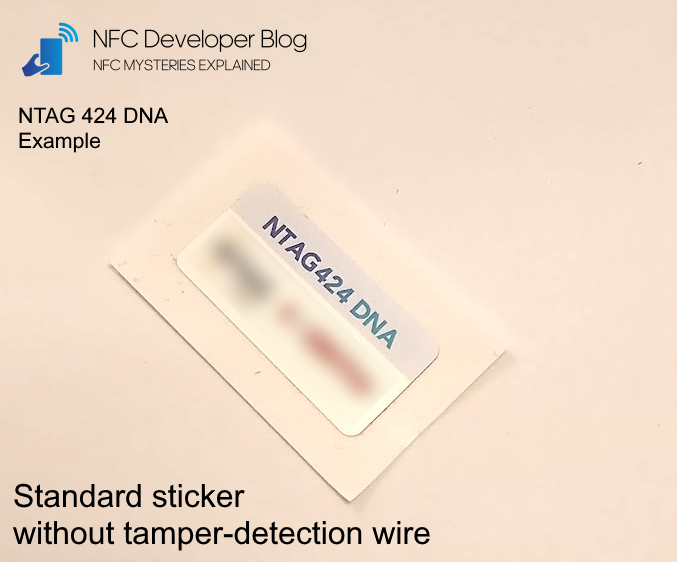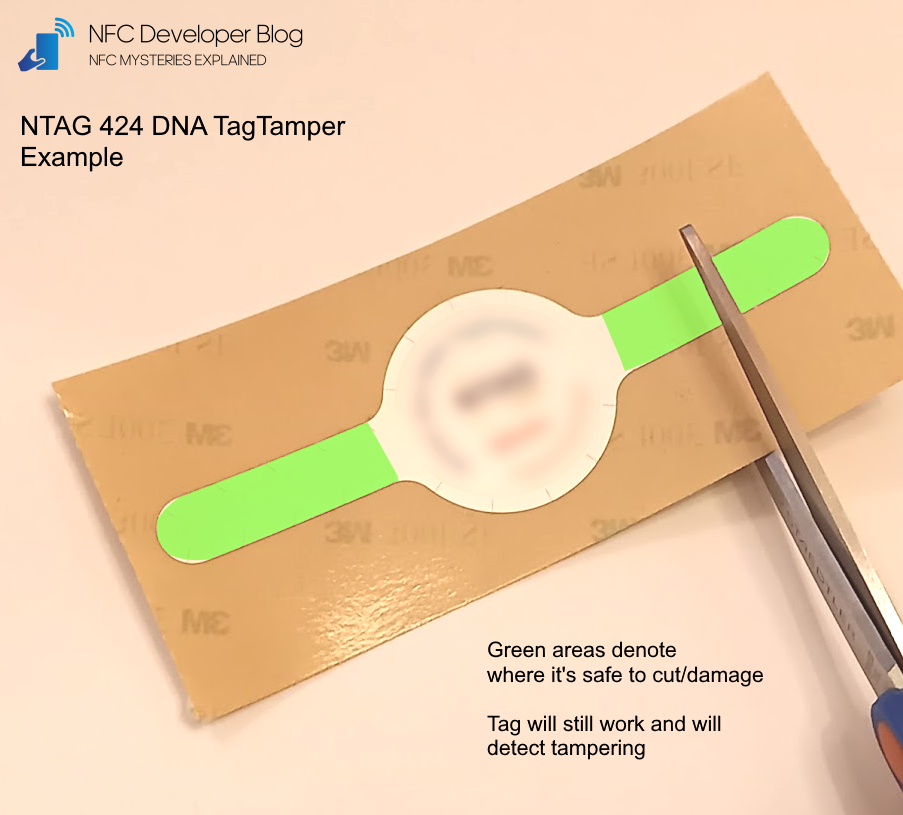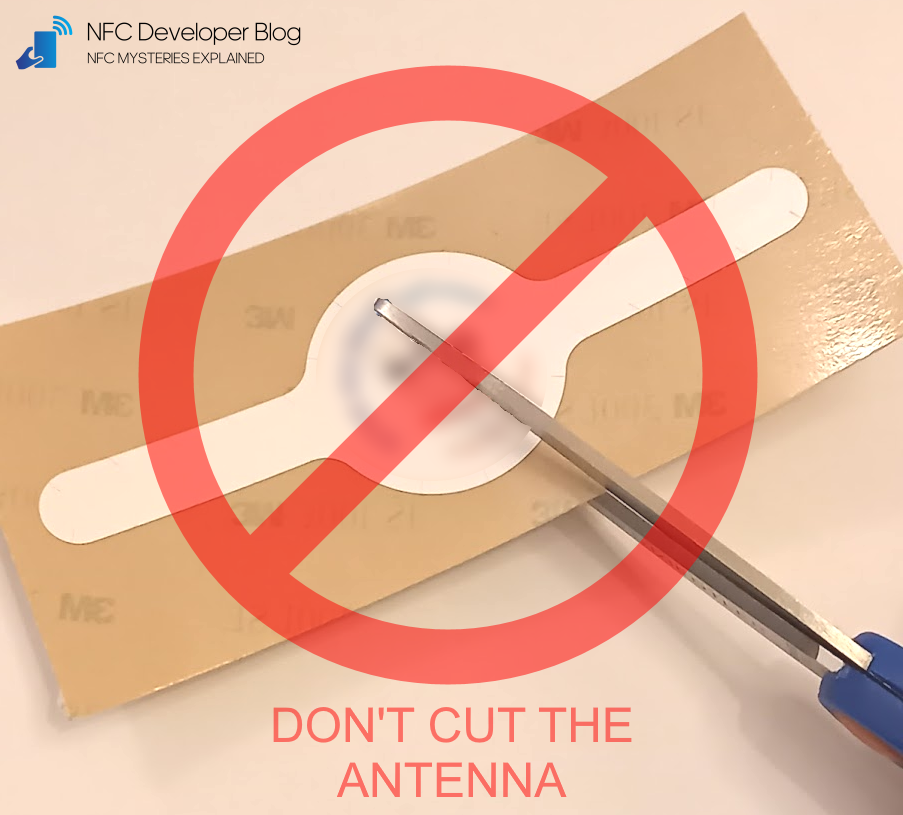While looking at NTAG® 424 DNA offers, you have probably seen them in different variants and form factors. Let’s quickly explain these variations here.
Technically, there is only one key difference between NTAG 424 DNA and NTAG 424 DNA TagTamper. Both tags practically have equal features, except that the TagTamper variant additionally has a physical tamper detection wire.
Note: NTAG — is a trademark of NXP B.V. This site is not affiliated with NXP.
Physical difference
The easiest way to figure out the differences between these two types of tags is to look at the pictures below.
Standard variant of the tag without tamper-detection wire. It’s not safe to cut/damage this tag anywhere because it might stop working at all.
The tag with tamper-detection wire. It’s possible to cut/destroy the areas marked green. The tag would still scan correctly, but the server would detect that it was tampered with.
It’s not safe to damage or cut any tag around it’s chip or antenna. This would cause that you would no longer be able to scan the tag at all.
How to detect tampering?
There are two methods which would allow you to detect that the tag was tampered with. This information can be decoded from the dynamic URL or obtained manually by issuing GetTTStatus command.
Dynamic URL
The dynamic URL feature can be configured in such a way that SDMENCFileData is mirrored within the URL. The TagTamper status can be inserted inside of that section and it would occupy 2 bytes.
Here is how the decoded file data would look like when the tamper status is mirrored inside. According to the specification, the CC value means that the tag was not tampered with.
If the tag’s tamper detection wire is damaged, the tamper status will turn into OC or OO, meaning that the tag was tampered with.
GetTTStatus command
When you are authenticated with the tag using the appropriate key, you can issue 0xF7 command in order to find out the current tamper status. The values returned have the following meanings:
II- the TagTamper was not properly enabled;CC- the tamper detection wire is not damaged;OO- the tamper detection wire was damaged (and is still damaged);OC- the tamper detection wire was damaged in the past, but now it seems to be repaired;





